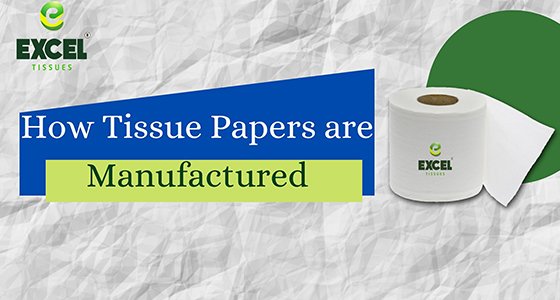How Tissue Papers are Manufactured

Tissue papers are commonly used nowadays in homes and restaurants to maintain hygiene. There are varieties of tissues which include facial tissues, table tissues, restroom tissues, car tissues, kitchen tissues. The use of tissue is growing day by day as people are getting aware of the advantages of using tissues in their daily life. There is an increase in the manufacture and supply to meet the demand of the tissues. Almost every restaurant and food stalls in Bangalore use table tissue and Excel tissues are among top table tissue suppliers in Bangalore. The quality of the tissue paper is determined by the softness of the paper.
Features of a tissue paper:
- 1. Tissue papers are light, soft, and, recyclable material.
- 2. Tissue paper do not pollute the environment but they impact on deforestation.
- 3. Tissue papers are available in different sizes and flavours.
- 4. Tissue papers are also antibacterial and a part of hygiene habit.
- 5. Tissue papers can also be used for decoration.
How tissue papers are manufactured:
There are 3 main processes involved in the manufacture of tissue paper namely pulping, pressing, and converting. It is similar to the manufacture of the paper but intensive care is taken to achieve the softness and thickness.
1. Pulping
- ● Paper pulp is generated first from wood fibres or recycled materials. This is achieved by grinding the fine flakes of the wood which are then soaked and pulled-apart.
- ● In a mixer tank, the fine flakes are dissolver with large quantity of water and required chemicals.
- ● Chemicals such as sodium sulphide and limestone are added additionally in the mixer tank to soften, strengthen and get the colour of the paper.
- ● Thus the pulping process converts the hardwood into a soft fibre material called the pulp.
2. Pressing
- ● The pulp is then uniformly poured on a constant moving belt from a highly porous material and is driven over huge drums and heated by steam.
- ● This step forces water to evaporate from the pulp and all is left out is a delicate fibre.
- ● The fibre is then transferred on to a massive heated roller and then it makes the fabric dry within a few seconds. The fibre is converted into thin paper.
- ● The thin paper is then transferred on to a core forming a roll of larger diameter.
- ● The speed of the roller is adjusted as per the requirement to get thinner or thicker tissue paper.
- ● The rolls are then transferred to the converting machine.
3. Converting
- ● The tissue rolls are moved through plies and papers are carved.
- ● The papers gates softened and are suitable for use.
- ● The papers are then cut into the required dimension.
- ● Stamping and branding are done.
- ● It is then packed in bundles in the required quantities.
